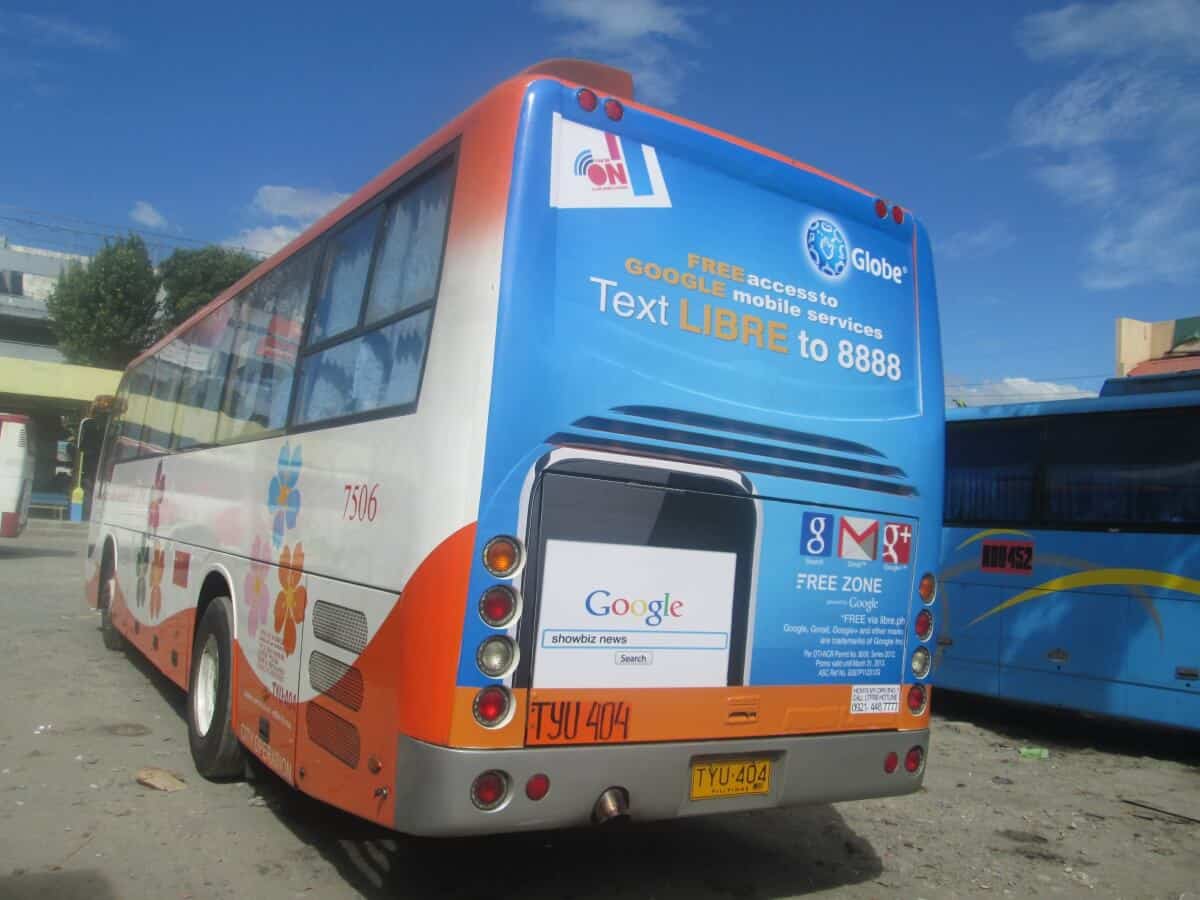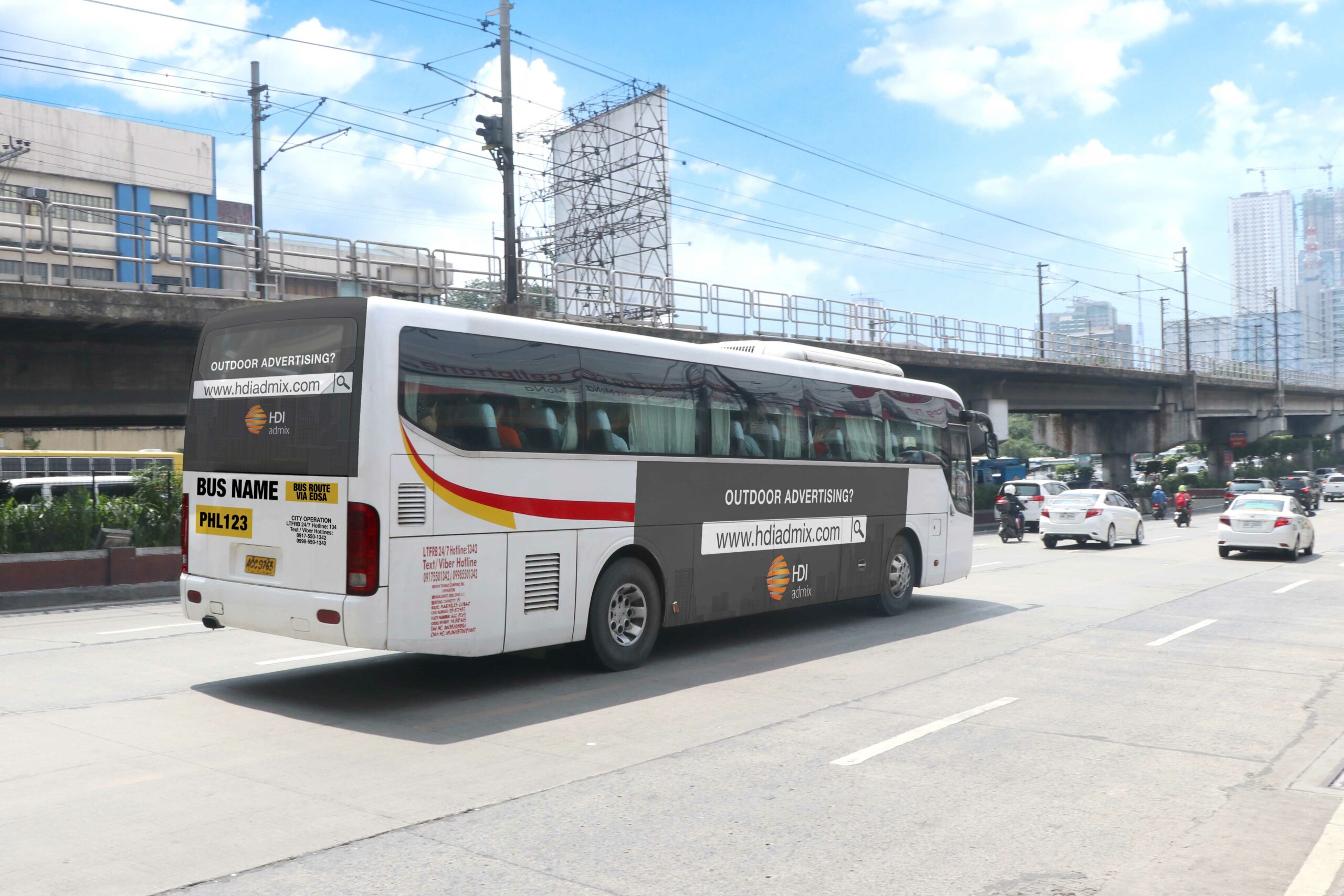Budget Friendly Transit Advertising Philippines for Brand Awareness
Budget Friendly Transit Advertising Philippines for Brand Awareness
Blog Article
A Detailed Exam of the Techniques and Strategies for Effective Transit Advertising Campaigns
Transit advertising campaigns provide a distinct opportunity for brand names to engage with varied audiences in vibrant settings. As we explore these critical parts, it ends up being clear that the path to an impactful transit advertising and marketing method is both satisfying and intricate, increasing the question of exactly how best to navigate these intricacies for maximum brand name visibility.
Recognizing Target Demographics
Comprehending target demographics is critical for the success of transit advertising and marketing campaigns (Transit Advertising Philippines). Determining particular target market sectors makes it possible for advertisers to customize their messages effectively, ensuring that the material reverberates with the intended customers. This approach improves engagement and maximizes roi
To efficiently assess target demographics, marketing professionals have to think about numerous vital elements, consisting of age, revenue way of living, occupation, and level choices. For example, a project aimed at young professionals may concentrate on convenience and modernity, while one targeting households could stress safety and reliability. Additionally, geographic aspects such as country versus urban settings can considerably affect consumer actions and preferences.
Information collection methods such as surveys, emphasis groups, and social networks analytics supply useful insights into demographic trends and customer behaviors. By leveraging this details, marketers can craft compelling narratives that align with the worths and demands of their target market.
Eventually, comprehending target demographics not only informs the strategic direction of transportation marketing campaign however additionally ensures that resources are designated effectively. This targeted technique raises the likelihood of accomplishing campaign purposes, fostering brand name commitment, and driving conversions.
Creative Layout Strategies
Efficient communication with target demographics counts heavily on innovative imaginative style techniques en route ad campaign. To successfully capture focus in a congested visual atmosphere, designers have to prioritize quality and visual effect. Using strong shades and high-contrast aspects can boost visibility, making sure that messages are quickly legible from a range.
Incorporating dynamic images that resonates with the target market is essential. Visual narration techniques can evoke emotions and develop memorable associations with the brand. In addition, strategic use typography assists share crucial information promptly; ideal dimensions and legible fonts additionally boost readability.
Including interactive components, such as QR codes or augmented reality features, can engage commuters beyond passive observation (Transit Advertising Philippines). These methods not only promote individual communication however likewise connect the void between conventional advertising and marketing and electronic involvement
In addition, using area creatively-- whether on bus covers, transportation sanctuaries, or train advertisements-- can lead to cutting-edge formats that break the mold of conventional advertising. By welcoming artistic creative thinking while maintaining brand uniformity, campaigns can foster a strong link with their target market, inevitably driving both recognition and activity. The combination of these style methods is critical for achieving effective his response transportation marketing results.
Strategic Placement Approaches
Making the most of the impact of transportation marketing depends upon strategic positioning techniques that ensure optimum presence and involvement. Efficient placement entails examining high-traffic areas and recognizing passenger demographics to recognize the go to these guys most useful places for advertisement screens. As an example, placing ads near entryways and exits of transit lorries can catch the interest of boarding and touching down guests, hence boosting exposure.
Moreover, using both external and interior surface areas of transit cars can considerably widen reach. Exterior ads, noticeable throughout commutes, engage pedestrians and other drivers, while indoor ads target passengers in a restricted environment. Furthermore, positioning advertisements in transit centers, such as bus terminals or train terminals, enables boosted impacts as commuters transition between various settings of transport.
Timing is likewise crucial; lining up the project launch with peak traveling durations makes best use of audience interaction - Transit Advertising Philippines. Moreover, leveraging electronic displays en route environments can help with dynamic material, giving real-time updates and boosting individual interaction. By utilizing these calculated positioning approaches, online marketers can make sure that their transportation marketing projects accomplish optimal exposure, reverberate with the target market, and eventually drive desired outcomes

Measuring Project Efficiency
To examine the success of transportation marketing campaigns, it is necessary to utilize a range of measurement techniques that provide understandings right into target market interaction and overall effectiveness. One key approach is using crucial performance indicators (KPIs), such as reach, impressions, and involvement prices, which measure the number of people interacted and viewed the ad with it.
Surveys and focus teams can likewise contribute in gauging customer understandings and recall, allowing marketers to comprehend the impact of their messaging. In addition, tracking web site traffic and social media sites interaction throughout and after the project helps determine direct feedbacks to the marketing.
Another efficient technique is using location-based analytics, which can provide information walking web traffic around specific transportation locations, using insights into whether the project effectively captured the interest of travelers. Additionally, assessing sales data can disclose correlations in between transit advertising and increased profits, providing concrete evidence of a project's effectiveness.
Study of Success
Understanding the efficiency of transit marketing campaigns through measurement methods lays the foundation for checking out real-world instances that highlight effective outcomes. By using geo-targeted digital advertisements and analytics, the brand name determined a 30% increase in sales in regions where the covers were plainly presented, showing the straight effect of transit marketing.
Another engaging example comes from a local not-for-profit organization that launched a project on subway systems to great site promote a community occasion. The use of straight engagement with modern technology magnified the campaign's reach and performance.

Conclusion
In summary, successful transit advertising campaigns necessitate a detailed technique that incorporates an understanding of target demographics, cutting-edge layout strategies, and critical placement. Jointly, these strategies foster brand presence and make the most of the return on investment in transit advertising initiatives.
Understanding target demographics is essential for the success of transit advertising projects.Reliable interaction with target demographics depends heavily on innovative creative layout strategies in transportation marketing campaigns. By employing these strategic positioning techniques, marketing experts can make certain that their transportation advertising campaigns attain optimal exposure, resonate with the target audience, and inevitably drive preferred outcomes.
Recognizing the effectiveness of transportation advertising and marketing campaigns via dimension strategies lays the foundation for analyzing real-world examples that show successful end results.In recap, successful transportation advertising projects require an extensive approach that incorporates an understanding of target demographics, innovative layout methods, and strategic positioning.
Report this page